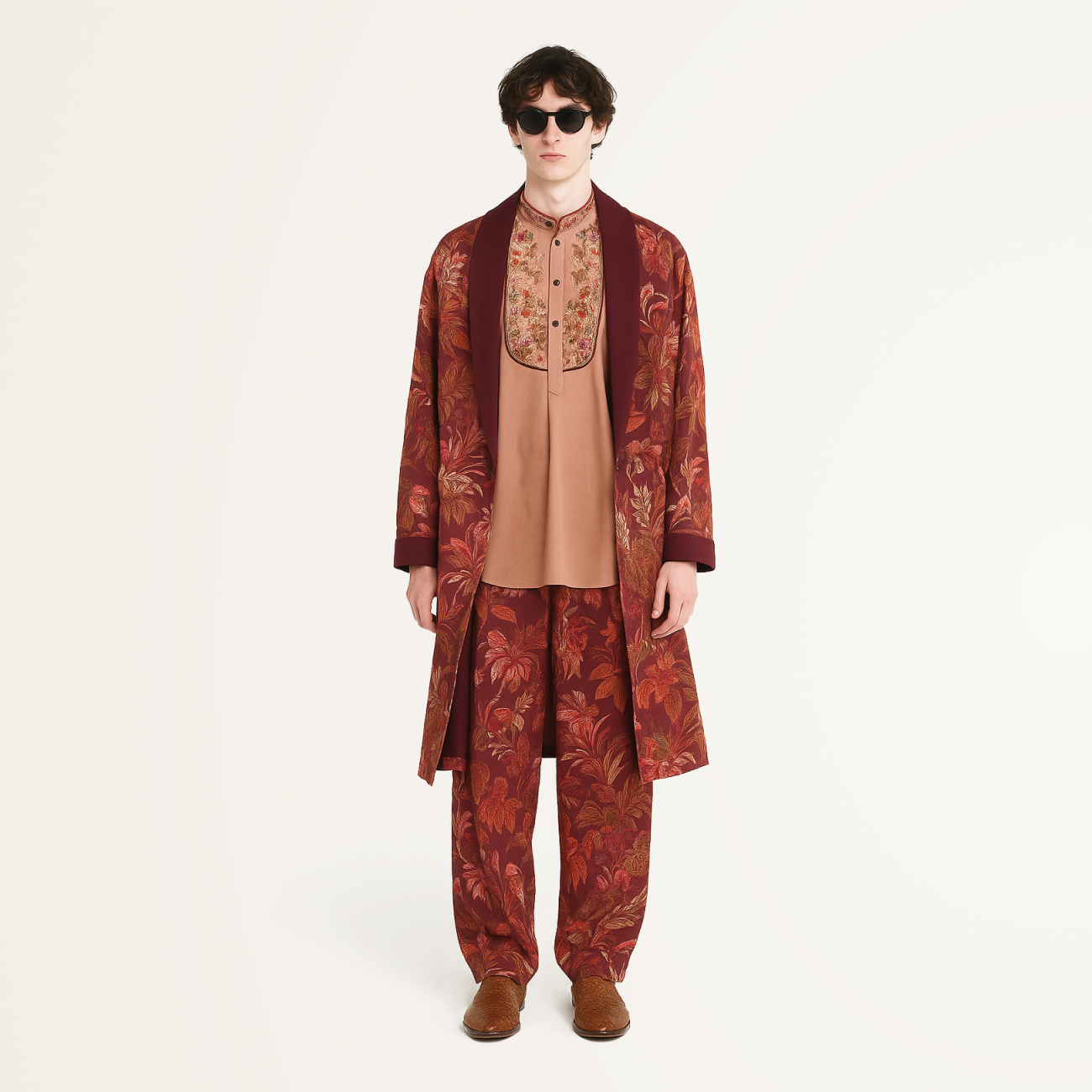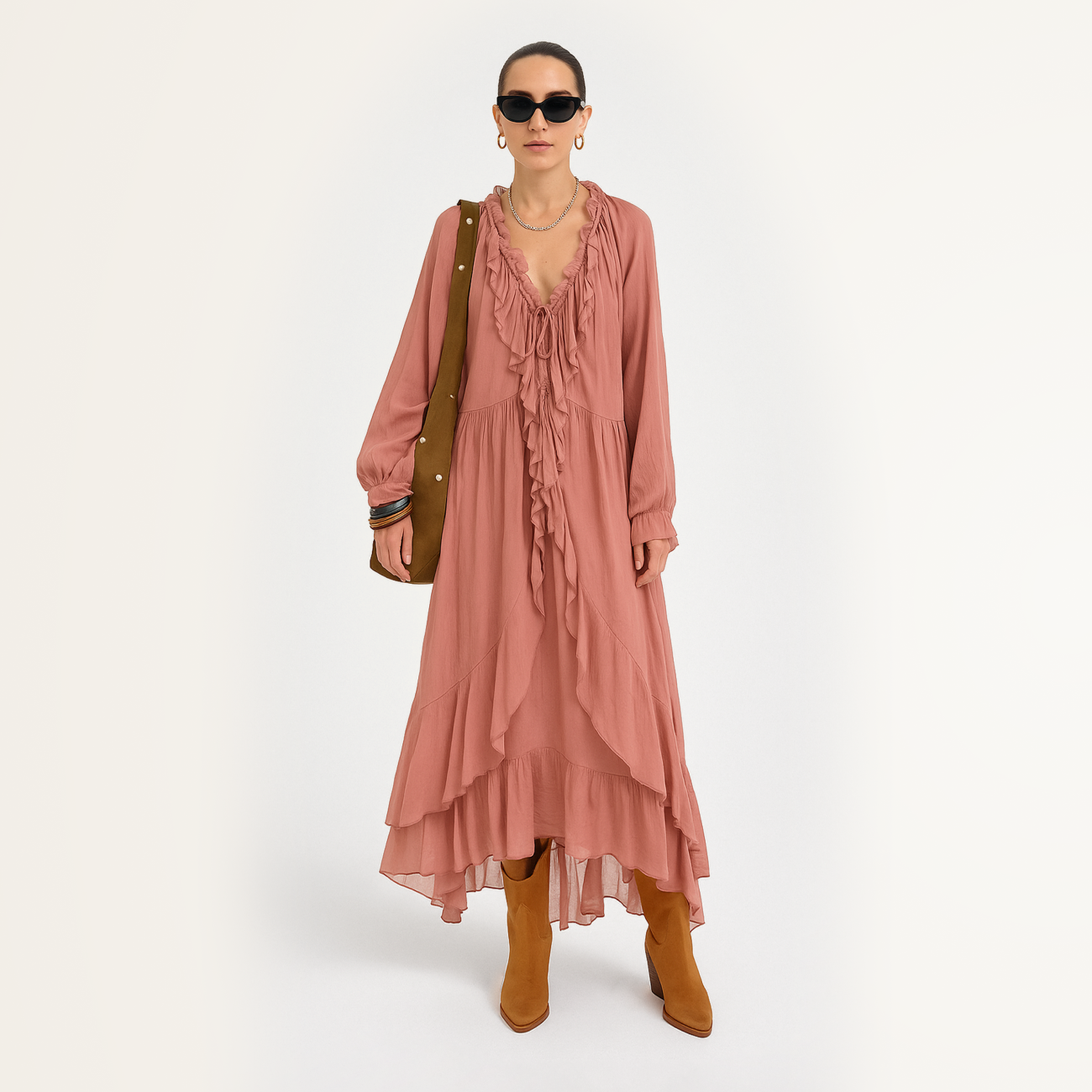Boho
Bohemian style, widely known as “boho”, is more than just fashion—it's a way of life. It reflects a desire for freedom, self-expression, and authenticity. Inspired by the bohemian lifestyle of artists, musicians, poets, and intellectuals, this style symbolizes a break from social norms and a rejection of conformity.
At its core, boho is about harmony with nature, a deep sensitivity to the world, and a connection to one’s inner self. It embraces cultural diversity, often incorporating elements from different traditions, ethnic influences, and vintage aesthetics, all while highlighting the individuality and unique spirit of the wearer.
History
The history of bohemian style is a story of creative freedom, rebellion against social norms, and the search for individuality—shaped at the intersection of cultures and time. It all began with the eccentric, unstable lives of the artistic intelligentsia in 19th-century Paris, when the term \
Signature elements of the style
Color palette
Boho style embraces warm, earthy tones—from brown, deep green, and burgundy to ochre and mustard yellow. At the same time, it welcomes vibrant accents that highlight the style’s artistic spirit and eclectic nature.
Prints
Key prints in boho include ethnic patterns, paisley, floral motifs, folkloric elements, and abstract designs. These prints enrich the outfit’s texture and reflect the style’s multicultural influences.
Textures
Boho is rich in textures that evoke naturalness and comfort. The style features natural fabrics like linen, cotton, wool, suede, and leather. These are often combined with decorative embroidery, fringe, crochet, lace, and beading.
Cuts & silhouette
Loose and layered silhouettes are fundamental to boho fashion. Flowing dresses, oversized blouses, capes, and ponchos create looks that don’t restrict movement and emphasize ease, comfort, and freedom.
Wardrobe essentials
- Maxi dresses and skirts – flowing and bohemian at heart, often featuring ethnic prints or embroidery
- Ponchos, capes, and cardigans – layered and cozy, adding texture and movement to the look
- Tunic tops and oversized shirts – relaxed silhouettes for effortless charm
- High-waisted trousers – often wide-legged or flared, combining comfort with a vintage vibe
- Suede or leather vests – a staple piece that adds a touch of rugged texture and nods to boho’s folk roots
- Accessories – statement necklaces, bold earrings and bangles, wide-brim hats, fringe bags, and jewelry made from feathers, stones, and metal, all adding to the eclectic, free-spirited essence of the style
Substyles
- Boho-chic — a blend of relaxed boho aesthetics and glamorous sophistication, adapted for urban life. It combines natural fabrics, ethnic patterns, and layering with elegant details, creating stylish and comfortable looks suitable for both everyday wear and social occasions.
- Ethno-boho — incorporates elements of traditional costumes from around the world, with Indian, African, and Latin American influences being especially prominent. This variation highlights cultural richness and global inspiration.
- Vintage boho — emphasizes antique and vintage pieces, complemented by accessories and garments that carry a sense of time, history, and personal story, adding nostalgic depth to the look.
- Glam boho — merges luxurious fabrics like silk and velvet with bohemian elements, introducing more refined accessories and polished details suitable for urban or evening settings.
- Hippie boho — features vibrant, psychedelic prints, flared trousers, and a wealth of accessories inspired by the 1970s counterculture, bringing a bold and expressive energy to the bohemian aesthetic.
Email: support@belt-app.com


















